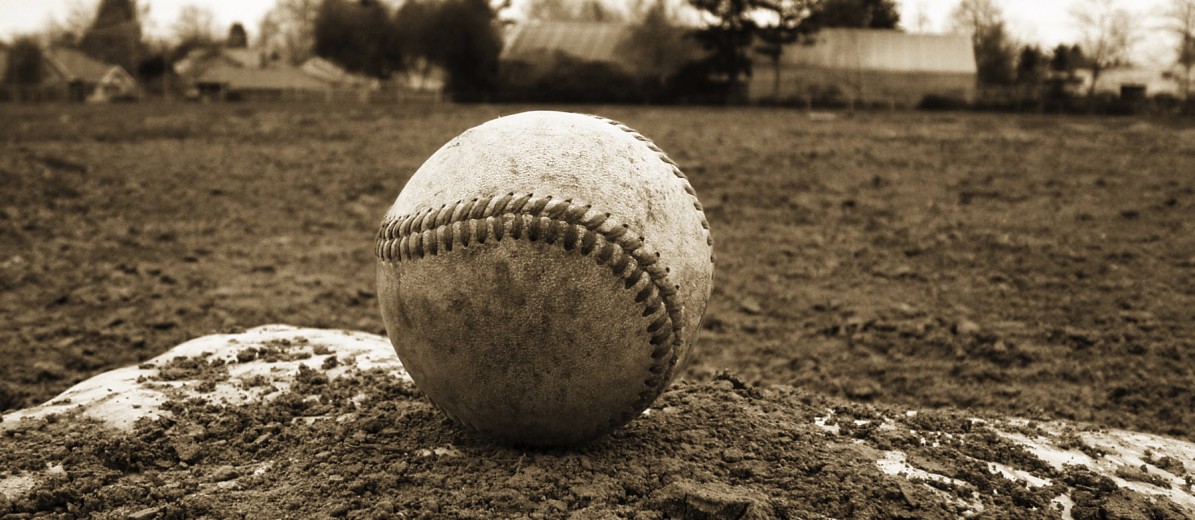The smell of fresh-cut grass. The sound of the ball hitting the mitt. The roar of the crowd as their favorite players round the bases. The World Series may have just wrapped up, but for many baseball aficionados, the sights and sounds of the national pastime will linger in their hearts just long enough to fill the gap until pitchers and catchers report in February. David Gonzalez is one of those souls. He has been living and loving baseball for as long as he can remember. Yet what the 43-year-old Dominican bartender and aspiring writer is most proud of is that he found a way to make it to the show — by running it — as an umpire.
The Academy
After having played from childhood through to semi-pro ball, and even coaching, Gonzalez started his training as an umpire nearly 10 years ago to see baseball “from a different point of view.” His dream took him to Florida, where he enrolled in the Jim Evans’ Academy of Professional Umpiring (before it closed this past year) leaving just two umpiring schools in the country. The five-week Major League Baseball approved course ran all day from Monday to Saturday, an experience he describes as “a mixture between going away to college and being in the military.”
Morning classroom study was followed by afternoon training in the field, preparing his colleagues to not just call balls and strikes but to know when and where to position themselves on the field during the game. “It’s not so much about knowing the rules. Anybody can read the rulebook. But what umpire school taught me is knowing where to go and where to be,” said Gonzalez. “If you don’t have a proper rotation with your partners, you are not going to be in proper position to make the right call.”
If the academic and strategic components were not enough, Gonzalez learned that the position required him to be in tip-top mental and physical shape. To make those calls, everyone from fans to owners expect the people officiating the game to be as athletic as those playing it. Even calling balls and strikes behind the plate requires a tremendous amount of stamina and fearlessness. If you are seeing 300 pitches (150 pitches from each side) that’s 300 split-second decisions being made over the course of a three to four hour game. So how does he do it? “The main thing when you are calling balls and strikes is to track the ball,” Gonzalez said. “To watch the ball go into the glove, to have good head height, to not move your head, to keep your eyes open and not flinch.”
Post-Grad
At the end of umpiring school, the top students are selected to take an evaluation course that will help determine their track to the major leagues. Those who don’t get picked for the majors are directed to local opportunities in amateur leagues, both in the United States and abroad.
Gonzalez is a passionate lover of the game, but is pragmatic about his own career path. Although some of his classmates have reached the majors he is under no illusion that he’ll be there one day. In fact, reaching the major leagues, statistically, as an umpire is even more difficult than making it as a player. It takes grinding for years through the minors — which is why he advises anyone interested to start young — coupled with a willingness to drop everything at a moments’ notice when a slot becomes available. But Gonzalez is more than okay with that. He doesn’t need to rub elbows with Miguel Cabrera, Alex Rodriguez or Pablo Sandoval to be happy on the field. “It’s a great way to stay in the game somehow,” Gonzalez explained. “Sure you are not playing it, you are not coaching it, but you are running it.” Spoken like a man who has run the show.
You think you have what it takes to be an umpire? Gonzalez shares the real deal about the job…
The Good
“The best thing about it is that you are getting paid to be on a baseball field, to work nine innings,” Gonzalez said. “No one goes out there to see us. We’re not the show. The players have the girlfriends, or the coaches or even their parents. They don’t come to scout us. But the best thing is getting paid to do something you love.”
The Bad
The lack of camaraderie is what Gonzalez misses most about being in the dugout. As he explains, when you are part of a team, it’s you and maybe eight to 20 other guys and coaches, having fun. In umpiring, you are on a small island, with very little to do but focus on the game. “In umpiring there’s no joking around,” he says. “There’s no hi-fiving my partners and saying ‘Yea, you made a great call.’”
The Ugly
Like many New York bartenders, Gonzalez knows not only how to talk it up, but can take a verbal barrage or two. However, one of the ugliest things is when he has to deal with disputed calls, not with a player or manager, but with the fans.
“At a college game in Florida this year, I was the home plate guy and I called a guy safe. Game over. The catcher didn’t argue. The coach didn’t argue. As my partners and I come off the field, one of the mothers just starts dropping f-bombs…f after f after f. It really gets under my skin,”
continues Gonzalez.
“The language that can come out I can take it from a player or a coach because we’re big boys. They’re playing the game. But to have a mother [or another parent] come out and do that. It happens a lot more often than we like.”
Some other interesting facts about the profession:
Salary: While major league umpires can get paid from $120 – $350K, minor league umpires start out earning only $1,900 a month. According to Gonzalez, umpires at other levels, like college, can earn anywhere from $120 – $350 per game.
Costs: Umpiring School can cost between $2,500 and $3,500 when adding meals and boarding to tuition fees.
Learn More: Check out Major League Baseball’s How To Become An Umpire
Images credits:
Baseball- istockphoto.com
Images courtesy of subject

